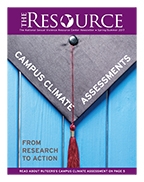The NSVRC collects information and resources to assist those working to prevent sexual violence and to improve resources, outreach and response strategies. This page lists resources on this website that have been developed by NSVRC staff.
- Enero 03, 2018
- Chad Sniffen
A palm card designed for the 2018 Sexual Assault Awareness Month campaign. Publish Date January 2018
- Enero 03, 2018
- Chad Sniffen
A palm card designed for the 2018 Sexual Assault Awareness Month campaign. Publish Date January 2018
- Enero 03, 2018
- Chad Sniffen
A palm card designed for the 2018 Sexual Assault Awareness Month campaign. Publish Date January 2018
- Noviembre 08, 2017
- Megan Thomas
This report focuses on how programs at the local and state levels have worked to engage with communities through community mobilization and public policy. It highlights examples from the field that represent promising directions in this area. Publish Date November 8, 2017
- Octubre 20, 2017
- Megan Thomas
The Equal Employment Opportunity Commission (EEOC), the federal agency charged with enforcing federal labor laws that prohibit workplace discrimination, released findings from a year-long look into harassment in the workplace. This report covers the key findings of the EEOC's study. Publish Date October 20, 2017
- Octubre 05, 2017
- Chad Sniffen
General information about the National Sexual Violence Resource Center. Publish Date October 2017
- Julio 06, 2017
- Megan Thomas
The Spring/Summer 2017 edition of The Resource explores how researchers at Rutgers University collaborated to create a campus climate tool. They share lessons learned and measurable steps for other schools considering climate assessments. The issue also includes: How RESTORE Sexual Assault Services works with campuses in New York The work #LoveWITHAccountability is doing to end child sexual abuse Services offered through the uSafeNH app How Iowa's service transition allowed them to reach more survivors And more!
- Junio 06, 2017
- Emily Bigger
In June 2017, comedian Bill Cosby will stand trial for aggravated indecent assault of a woman in his Montgomery County home more than a decade ago. The following fact sheet provides important context on sexual violence, including victim behavior and trauma, offender dynamics, and the use of drugs and alcohol to perpetrate sexual violence, to members of the media covering the trial and other interested parties. Publish Date June 6, 2017
- Abril 25, 2017
- Megan Thomas
These talking points cover the key highlights of The National Intimate Partner and Sexual Violence Survey (NISVS) 2010-2012 State Report. Publish Date
- Marzo 28, 2017
- Megan Thomas
This tip sheet for journalists includes best practices and story ideas for writing about sexual violence. Publish Date March 2017
Paginación
- Página anterior
- Página 35
- Siguiente página

